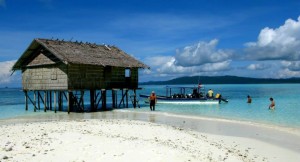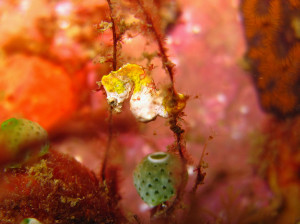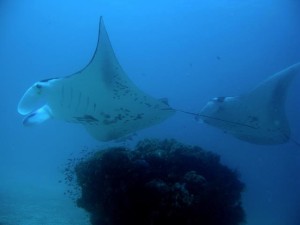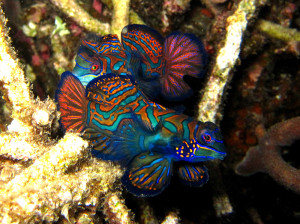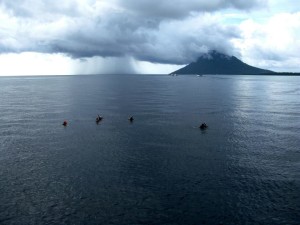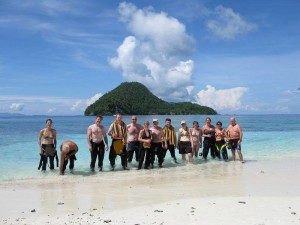Travel Stories
Diving the Coral Triangle
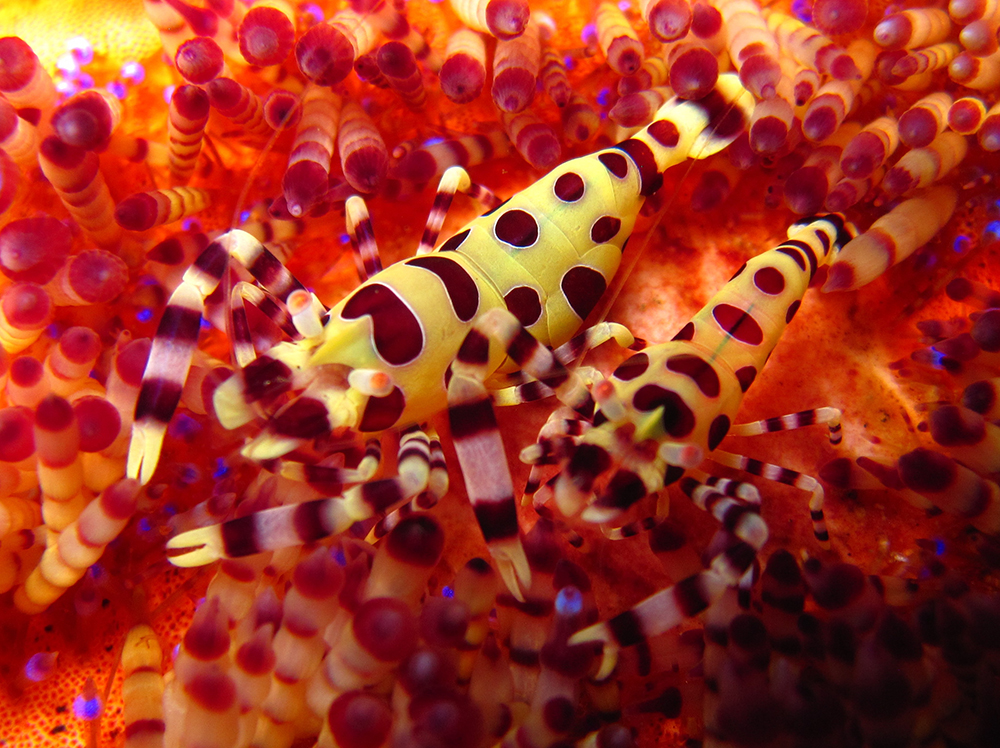
There are many reasons to visit the Indonesian archipelago, but a big reason is diving due to the various locations available. After all, Indonesia is located in the “Coral Triangle” within the marine waters of Indonesia, Malaysia, Papua New Guinea, Philippines, Solomon Islands and Timor-Leste – a region with more than 500 reef-building coral species and an epicenter of marine biodiversity. Geographically, Indonesia has 17,500 islands scattered over both sides of the equator and spread out in an area that is over 700,000 square miles. You’ll find some of the finest reefs in the world there, but the main reason for my trip to Indonesia was to try muck diving in Lembeh Strait – North Sulawesi.
Getting it “Strait”
Just the word “muck” evokes images like the Pines River in Revere, Massachusetts which usually (if not always) has dark, murky water – to see the bottom your face must be less than a foot away from it. But the Pins River is only 50 miles from home. Lembeh Strait in North Sulawesi is over 9,000 miles away. It’s been two years since my last visit to Indonesia but I’ve been anxious to return and see more of the underwater beauty.
Although Lembeh Strait was at the top of my list, I also considered stops on Bunaken Island as well as Raja Ampat, West Papua. Bunaken Island is known to have excellent wall diving and Raja Ampat is known for having very healthy coral reefs and many species of fish.
So, I started planning and lucky for me a Google search turned up www.divesafariasia.co.uk. Ben Stokes, co-owner of the company, was offering a Trans-Indonesian trip that sounded perfect, and it was. I contacted Ben and he later phoned me that evening to go over details as the trip was departing in less than a month, and there was one spot left. Lembeh Strait was not part of his group trip, but he kindly offered to set up that portion for me, and I would simply go and meet the group the following week in Bunaken Island. By mid-November 2013, I was heading to Indonesia for 18 days.
Ben set up Kungkungan Bay Resort for me on the black sand shore of Lembeh Strait. This is a luxury sea level resort with a professionally run dive shop on-site. The accommodations are superb; a beach front cottage just steps from the water. It had a living room and a large separate bedroom that had a walk in stone shower – and its location is picture-perfect. The resort’s restaurant is open 24 hours with a full-service menu. There is wide variety of deliciously prepared food of quality ingredients. They even smoked their own bacon! The professional and friendly staff ensures you will have a pleasant stay at KBR.
Boat and Shore Diving
The dive operation www.divekbr.com is run very smoothly by Manager Stefan Soh. They offer two boat dives in the morning, one afternoon boat dive and a night dive. There is unlimited shore diving from the long dock, so you never get sand in your gear. All you have to do is let the staff know that you will be going on a “shore” dive. They will have all your gear ready for you on the dock where you will be doing a giant stride in the water. When you are done with your dive there is a ladder to climb out. The staff is always there to help with getting in and out of the water. Shore diving from KBR is done at slack water only due to the currents – but it’s really the current that drives great visibility and fosters an abundance of strange and wonderful critters.
The term “muck” has been used to describe the diving in Lembeh Strait, but that’s really a misnomer. Here’ “muck” simply refers to the black sand, lack of natural hiding spots, and a stark environment many critters have adapted to live and thrive in. So it was quick to see that visibility is far from zero.
Lembeh Strait is sometimes called a muck diving mecca – and for good reason – it’s the reason divers from all corners of the globe go search of the most unusual critters. It did not take long to discover that any critter with odd shapes, copious amounts of hair, psychedelic colors, deadly poisons, cunning camouflage (or prefers to carry other marine life on its back) will simply thrive in Lembeh Strait.
My first dive was a site called Palau Abadi located close to shore across from the very busy city port of Bitung. The site is also next to many fishing boats that were moored. My first thought was; “What could possibly be here besides floating debris?” We all did our back roll and descended to the black sandy bottom, but the visibility was far better than I initially pictured in my mind.
The action started right away when my dive guide Liberty pointed out a peacock mantis shrimp, a juvenile painted frog fish, a xeno crab on sea whip, then an orangutan crab, a frog fish, a sea whip goby, a ghost pipefish, a blue ring octopus, a shrimp fish, a Lembeh Sea Dragon, and a Cuttlefish egg with the developing embryo – all in the first twenty minutes of the first dive. The action just continued throughout the day and the remainder of my stay at Kungkungan Bay Resort.
When we visited sites like Jahir I, Aer Bajo II and III, or TK 3, there wasn’t any coral and the bottom was black sand only. These locations offered visibility around 20 feet, but I also saw the strangest marine life. On the other hand, dive sites like Nudi Retreat offered a wall covered in hard coral and yellow soft coral. Dive site Angles Window had a wall covered in hard corals, and at 80 feet there was a swim-through with a resident pigmy seahorse. Across from the resort was a dive site named Pintu Colada where we experienced a sandy slope with critters. After finishing the dive in the shallows, there were several healthy coral heads to swim around in the bright shallow water. These dive sites had visibilities that exceed 50 feet. Pintu Colada was also the site of the Mandarin fish dive. This was my first Mandarin dive and we were not disappointed. Several large Mandarin fish greeted us for their mating ritual – this dusk to night dive was truly spectacular.
During the initial dive briefing, the manager invited us to suggest any particular critters that we wanted to see. I arrived with a wish list of “critters” – 32 in fact – and 75% were nudibranchs. The first day of diving, I just wanted to get in the water to see what it was all about. It was incredible, and my guide showed me so much that I practically forgot about my list. When I looked back at the list that evening, the most sought after for me was the “boxer crab”. I couldn’t stand the thought of going home without seeing it, but the following day during the afternoon dive the boxer crab was unveiled in all its radiance.
I saw things there that I never thought I would ever see. It was almost common to see several Blue ring octopus, different species of pygmy sea horses, ghost, banded and robust pipefish, soft coral crabs just to name a few.
Moving Past Lembeh Strait
The second leg of my trip required a three hour drive to Tasik Ria Resort where I would finally meet up with Ben Stokes from Dive Safari Asia. From this point on, I was traveling with Ben and a group of 15 diving at Bunaken Island, and then off to Raja Ampat.
I only had one day of diving Bunaken Island. The spacious dive boat leaves in the morning and stays out near Bunaken Island all day. Lunch is served for all the divers during the surface interval. The dive boat’s guides give a descriptive briefing and are safety conscious. There were four divers to one guide.
The diving here involved gorgeous wall diving with tiny critters sprinkled about. The wall itself is basically vertical and there is some current to contend with, but the visibility was at least 100 feet. There were huge barrel sponges, gorgonians, and big stands of staghorn coral along with giant turtles. There was also smaller stuff including colorful ascidians, soft coral, nudibranchs and more. It was amazing to look around and see all the life.
Round Three
The third leg of the trip involved a late day flight from Manado, North Sulawesi to Sorong, West Papua. During this two hour flight we crossed the equator into the southern hemisphere. We spent a memorable evening at the one and only Royal Mamberamo Hotel in Sorong.
The following morning, we had a two hour speedboat ride to Mansuar Island in the area known as Raja Ampat and stayed at the Raja Ampat Dive Lodge (www.komodoalordive.com) located on a brilliant white sandy beach with the verdant green mountain backdrop. The cottages were very comfortable with good food and a friendly staff.
The location and setting of this dive resort was absolutely gorgeous. It also had a fantastic house reef, though all of the house reef dives were done by boat (again, sand never ended up in any gear). The crew would have us board the boat at the dock, and the captain would either drop us at the end of the long dock or drop us off further up the reef and then follow our bubbles. We would usually have two guides in the water with two or three divers per guide. The briefings for each dive site were very informative, well-illustrated, and well-planned. Our guides were Dovan and Roy, they did a great job pointing out critters during each dive.
The boat schedule included two dives in the morning and one in the afternoon with a choice of evening or night dive before dinner. After the morning boat dives, we would stop at an uninhabited island or village for our surface interval which included coffee, tea or water along with fresh fruit and baked snacks. One day we visited Arborek Island and had our second boat dive of the day there. It was a fantastic location with a huge variety of marine life. We had macro critters pointed out to us, witnessed giant clams, and watched a school of Napoleon Wrasse foraging in the shallows before parading off to deeper water.
Another fantastic site worth mentioning is Frewins Wall. I could have spent several days at that one site. It started out as a slope with hundreds of tiny yellow sea cucumbers, but the highlight was a deep cut/overhang that the current took us by. This overhang went on and on with soft coral just draping out of the wall with black coral and gorgonians. It ended with a shallow shelf where we spent some time observing anemones with resident clown fish swimming about; just beautiful.
Raja Ampat had a lot of odd critters, and some were difficult to make out. One of the oddities was a hermit crab with tiny anemones growing on its shell, then the half-inch red crab that looked like it didn’t have legs, but closer observation showed me that the legs were clear. Then, in the white sand, Dovan pointed out a sandy colored 2×1/2-inch flat worm-like critter, but a closer look showed me that it was a tiny flat crab – and these were all spotted on the night dives.
Good Planning and Great Guides
This was truly a fantastic trip! Ben really knows how to put a well-organized dive trip together. It was a long journey but he made everything seem effortless. I enjoyed every aspect of this trip and having him as a guide.
Dive Safari Asia run their ‘Trans Indonesia Tour’ twice a year. The next dates for the trip are:
7th – 23rd November 2014
20th March – 5th April 2015
For more information or to book, call 0800 955 0180 or visit www.divesafariasia.com.
Blogs
Alonissos: The complete diving destination (Part 1)

In June we were incredibly fortunate to be invited to dive in Alonissos, a small Greek Island in the Sporades island chain located in the North Aegean Sea. While I have long been a big fan of the Greek Islands as a great holiday destination, I had not had the opportunity to do any diving on previous visits and Mike and I were extremely excited to see what Alonissos had to offer both above and below the surface!

The Sporades are easily accessible via the airport in Skiathos (the first island in the chain), which is served by Jet2 flights from all major UK airports from May through October. Numerous ferries and charter boats make island hopping from Skiathos Town a breeze. After an hour boat ride, the picturesque port of Patitiri was a wonderful introduction to Alonissos, where we were met by our gracious hosts Kostas of Albedo Travel and Dias of Alonissos Triton Dive Center. Mike and I were delighted to be staying at the Paradise Hotel, aptly named for its stunning views over the sea and great location for walking to the waterfront.

Alonissos is beautifully situated in the National Marine Park of Alonissos and the Northern Sporades, the largest marine protected area in Europe. The surrounding seas offer fabulous marine life, including incredibly rare species such as the Mediterranean monk seal. They boast deep walls covered in gorgonians and sponges, stunning topography with caverns, swimthroughs and pinnacles, and the first accessible ancient shipwreck from 500BC!

In locations where historical sites have been reported, the waters are largely restricted, but with collaboration between government, underwater archeologists and dive centres, incredible underwater museums are being created for a truly unique diving experience. Alonissos is home to the first of these, the Ancient Shipwreck of Peristera Accessible Underwater Archeological Site. The chance to dive into history (along with reports of healthy reef life and amazing underwater topography) meant Mike and I were keen to get in the water.

Our introduction to the diving around Alonissos was at the Agios Georgios Pinnacles, in the channel between Alonissos and Skopelos. This fantastic site was named “The Chimney,’ and proved to have a huge amount to see. We got to a decent depth here (over 25m), and marvelled at a colourful reef wall with a wonderful swim through whose rocky walls were absolutely covered with life. As well as brilliant topography there was no shortage of macro life here. We saw numerous nudibranchs, five different species in total. The second dive at Mourtias reef nearby was a shallower dive along a nice wall with lots of crevices. Several moray eels and grouper called this site home. We enjoyed looking in the crevices for lobster and smaller benthic life, such as cup corals and tunicates.

Our itinerary allowed us two dives a day with afternoons left to explore the island with our hire car and evenings to enjoy the famous Greek hospitality. This proved to be a lovely mix of in-water and land based diversions.

The next days diving to the Gorgonian Gardens and Triton’s Cave was to be even better! These two stunning sites are nothing short of fabulous. The Gorgonian Gardens was a deep wall near to the Agios Georgios islands. The ever-present currents in this deep channel meant that the sea life was amazing … the namesake Gorgonian sea fans dotted the wall at a depth of 30 to 50 meters, getting ever larger the deeper we went. Above 30m was by no means less beautiful, with sponges, corals, scorpionfish, moray eels and some rare and colourful nudibranchs.

The second shallower dive of the day was to Triton’s Cave or the Cavern of Skopelos, on the east side of that island. The spectacular rock formations had wild striations both above and below the water making a truly epic topography. The cavern entrance was at 14m, and big enough for a buddy pair, winding up to 6m and passing two beautiful windows out into the blue. Emerging from the cavern, the light at the shallower depths and the incredible rock formations made for a fantastic gentle swimming safety stop and we all surfaced by the boat with massive grins.

Check out our next blog :Alonissos: The complete diving destination (Part 2)” to hear about our amazing dive on the 2500 year old Peristera Wreck!
Thanks to:
Alonissos Triton Dive Center https://bestdivingingreece.com/
Albedo Travel https://alonissosholidays.com/activities/
Paradise Hotel https://paradise-hotel.gr/
Alonissos Municipality https://alonissos.gr/en/
Blogs
Mamma Mia! Diving Skopelos (Part 2)

Our second days dive itinerary was to the famous Christoforos wreck! This is arguably the best dive in Skopelos and though only open to divers with deep diving experience, this 83m long wreck is well worth the visit.
The Christoforos sits in 43 meters of water with the deck at 32 to 35 meters. A 30m dive can give an impressive view of the wreck, though such a large wreck needs a few dives to truly do it justice. Given its ideal location just a 2 minute boat ride from the dive centre dock it is an excellent first dive of the day. The sheltered site is also diveable in all but the absolute worst weather so although deep, the water is usually clear with little to no current making it a very pleasant dive. The site is superb for technical diving and a great training site for the Tec 40 and 45 programs, offered by Skopelos Dive Center.

The Christoforos wreck was originally a collier ship built in 1950 at Grangemouth shipyard under the name “Thomas Hardie”. In 1976 she joined the Greek merchant fleet as “Christoforos”. On the 2nd of October 1983 the Christoforos was carrying 2600 tonnes of cement from Volos to Piraeus Port. During the voyage the weather turned, resulting in the ship developing a 7 degree list, whereby she changed course for safe anchorage at Panormos, Skopelos. The ship reached Panormos at 16:00 with a list of 17 degrees and water ingress to No. 1 hull. Though attempts were made to right the vessel, the crew were ordered to abandon ship at 22:00. The captain, lieutenant and the quartermaster remained to try and save the ship, but had to abandon the attempt themselves and the Christoforos finally sank at 05:30 on 3rd October 1983. She now sits upright in 43 meters of water less than 200m from shore in Panormos.

Diving has only been allowed here since 2018, so the wreck is very well preserved and a real treat to dive. Permission to dive here was granted by the authorities after lots of incredibly hard work by the Skopelos Dive Center staff. Having a fantastic wreck in such an amazing location and in excellent condition is a real privilege.

Of all the sites in Skopelos this was the site Mike and I were most keen to experience. Having kitted up and zipped across the bay to the mooring, we left the surface and followed the descent line until the wreck emerged spectacularly from the blue at 15m. She is a big and beautiful wreck, sitting as though calmly continuing her journey along the seabed. With most of her original features still intact there were points of interest everywhere, including the anchors, winches, ships telegraphs, the wheel and RDF antenna.

We found that aquatic life had colonised the ship, with schools of fish, electric blue nudibranchs, a large moray eel and the resident scorpionfish lurking inside the bridge. The Christoforos was truly a stunning wreck and despite maximising our time at depth we eventually had to say our goodbyes and begin the slow and steady return to the surface.

After a superb morning dive we had the afternoon to do a little sightseeing of the island, with a trip to the church of Agios Ioannis Kastri made famous by the blockbuster movie “Mamma Mia!”. Mike and I spent a happy afternoon pootling around in our little hire car before meeting up with Lina from Skopelos Dive Center. An underwater archeologist as well as a dive professional, Lina had offered to show us a rather special attraction, the Christoforos shipwreck Digital Spot public information and awareness centre.

A fantastic initiative made possible from the collaboration of the government and hard work of the staff at Skopelos Dive Center is the “Digital Spot” in Agnontas port. This information center has a number of displays on the history of the Christoforos wreck, the process by which the wreck was allowed to be opened to the public for diving tourism, other sites of historical interest in the area, a video of the wreck and the best bit, a virtual reality dry dive experience! The beauty of the VR system is that non diving members of the family can see what you have seen on the wreck, or you can see areas that you may not have explored during the dive due to time or depth limitations. It was a truly immersive experience and a great addition to the dive itself.

After a wonderful day we celebrated our last evening on the island with an exquisite meal in Skopelos Town with fabulous views over the town and bay, washed down with the excellent local wine. The lamb with lemon and potatoes was a meal which I could happily eat every day for the rest of my life!

Skopelos is an island that truly has it all. The diving is excellent, the landscape is beautiful with plenty of non diving activities, the locals friendly and the food and drink superb. Given how accessible it is as a holiday destination it has avoided becoming overcrowded and even in peak season offers a fun yet relaxing atmosphere. We highly recommend giving Skopelos a visit. We will certainly be back again!
Thanks to:
Municipality of Skopelos (https://skopelos.com/)
Skopelos Dive Center (https://sporadesdiving.gr/)
Ionia Hotel (https://www.ioniahotel.gr/en)
Dolphin of Skopelos (https://dolphinofskopelos.com/)
Ta Kymata restaurant (@takymata)
The Muses restaurant (https://www.facebook.com/TheMussesMousses/)
Aktaiov resturant (https://skopelos.com/listings/aktaion-taverna/)
-

 Blogs2 months ago
Blogs2 months agoDiving With… Nico, Ocean Earth Travels, Indonesia
-

 News1 month ago
News1 month agoMurex Bangka Announce New Oceanfront Cottages & Beachfront Dining
-

 Blogs2 months ago
Blogs2 months agoA new idea in freediving from RAID
-

 Marine Life & Conservation1 month ago
Marine Life & Conservation1 month agoIceland issue millionaire whale hunter a licence to murder 128 vulnerable fin whales
-

 Marine Life & Conservation2 months ago
Marine Life & Conservation2 months agoThe Shark Trust Great Shark Snapshot is back
-

 News3 months ago
News3 months agoCharting New Waters; NovoScuba Goes Global with the Launch of their Revolutionary Dive Training Agency!
-

 Gear News1 month ago
Gear News1 month agoNew Suunto Ocean – a dive computer and GPS sports watch in one for adventures below and above the surface
-

 Marine Life & Conservation Blogs2 months ago
Marine Life & Conservation Blogs2 months agoBook Review: Plankton



